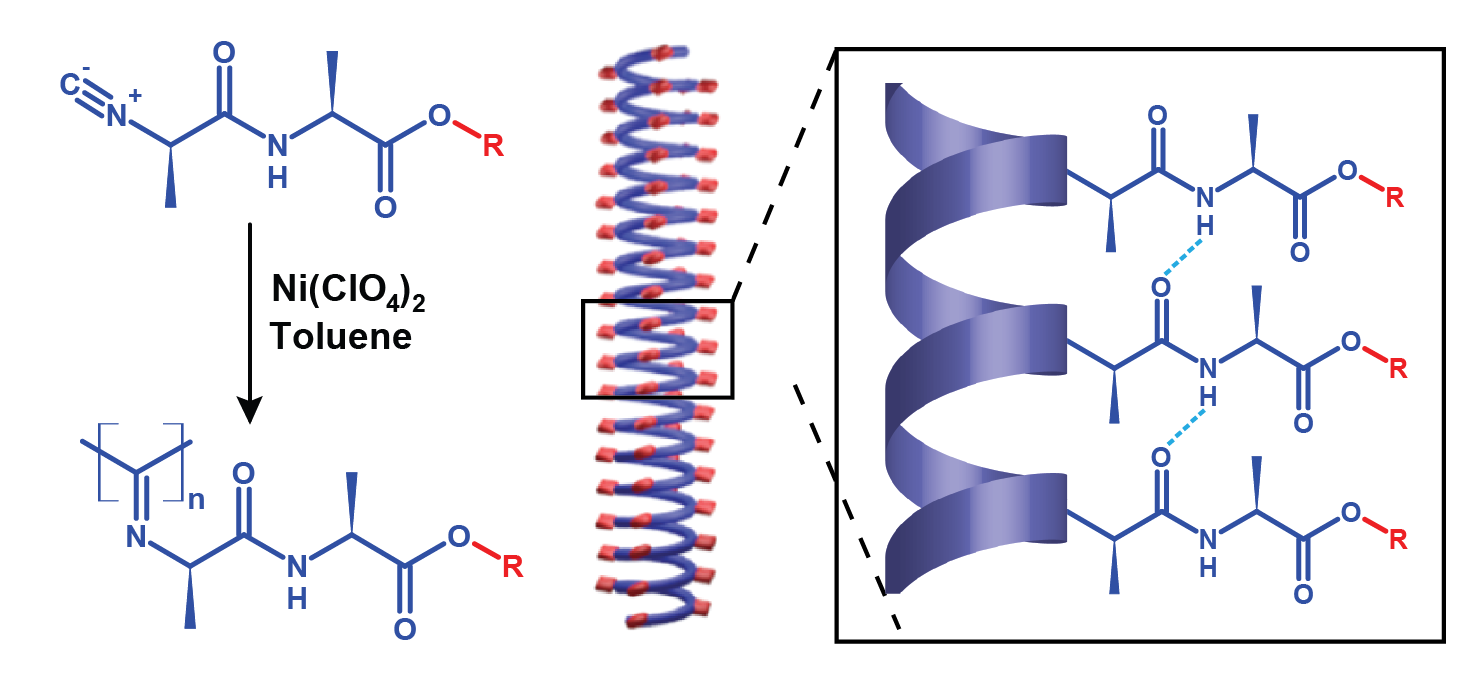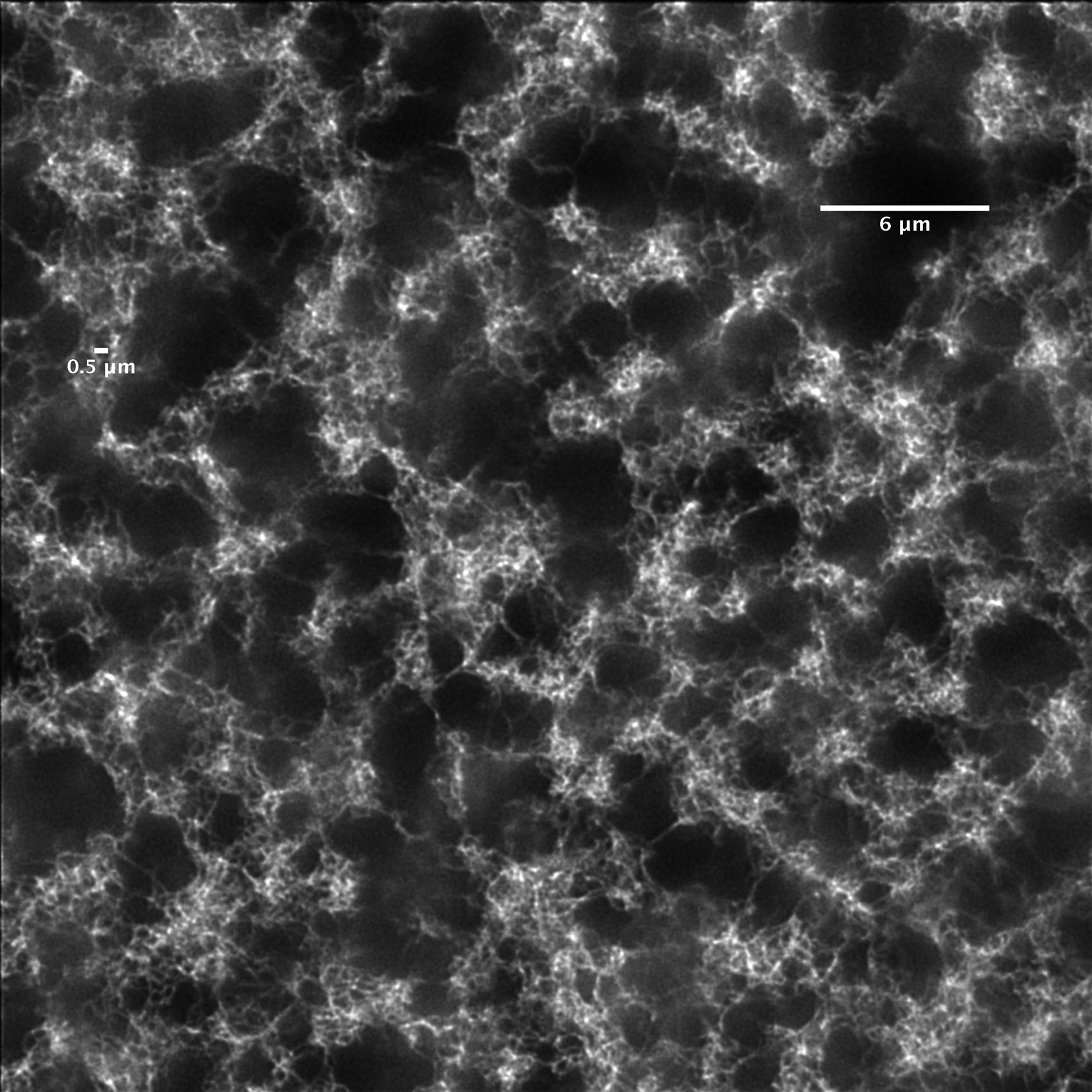Structure of Biomimetic Materials
A large number of natural and synthetic hydrogels are currently used for tissue engineering and regenerative medicine. Over the last decade, there has been an increasing awareness of the role of material properties of the substrates in guiding cellular behaviour. This has inspired chemists to create a new generation of materials with mechanical properties closed to that of natural occurring biopolymer networks. Recently, the groups of Prof. Alan Rowan (Queens University, Australia) and Prof. Paul Kouwer (Radboud University of Nijmegen, The Netherlands) were able to develop a fully synthetic material that mimics in all aspects the gels prepared from cellular filaments. These synthetics gels are prepared from polyisocyanopeptides (PICs) grafted with oligo(ethylene glycol) chains and share structural features of biopolymers: their helical structure renders the polymer molecules relatively stiff while the interaction between the side chains enable the formation of bundles or fibrils of defined dimensions. The triethylene glycol side chains attached to the polymer backbone render the material thermo-responsive (it will gel upon heating beyond 20 °C and become liquid again upon cooling). Despite being characterized extensively in bulk, the fundamental dynamics and the relation between the macroscopic properties and the microscopic structure at cellular length scales of PIC-based hydrogels remains obscure.

Classically, structural characterization of materials is performed with electron microscopy or scanning probe microscopy. Despite the high spatial resolution achievable with these techniques, they are unable to measure dynamics ‘in situ’ and sample preparation can be a laborious process. In contrast, optical microscopy has the potential to unravel the dynamics in complex heterogeneous systems but has been limited to a spatial resolution of ca. 200 nm. In the past 10 years fluorescence imaging has been revolutionized by the successful development of sub-diffraction (super-resolution) microscopy modalities which can achieve resolutions down to tens of nanometers (see Molecular Organization at the Nanoscale).The various possibilities of fluorescence microscopy to probe dynamics and heterogeneities, with molecular resolution, for a wide range of time scales makes it an ideal tool to address many topics of polymer science. In this project we are using fluorescence microscopy to image the polymer network at the micro to nanometer scale.
Our most recent results can be found in this publication.

For more information on PIC-based hydrogels:
- Kouwer P.H.J., et al. (2013) Responsive biomimetic networks from polyisocyanopeptide hydrogels, Nature, 493, pages 651–655 (article can be found here)
- Jasper M., et al. (2014) Ultra-responsive soft matter from strain-stiffening hydrogels, Nature Communications, 5, 5808 (article can be found here)
- Jasper M., et al. (2016) Bundle Formation in Biomimetic Hydrogels, Macromolecules, 17(8), pages 2642–2649 (article can be found here)